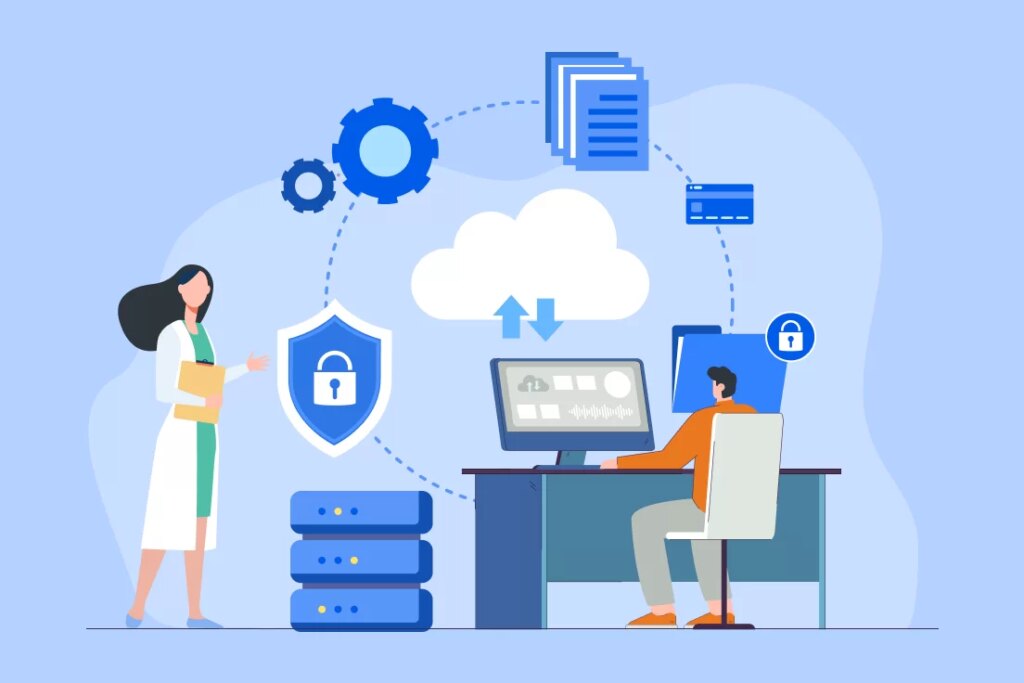The Cloud Data Revolution – The advent of cloud computing has revolutionized the way businesses store, manage, and analyze data. With the ability to access and process vast amounts of information from anywhere in the world, cloud data has become an invaluable asset for organizations across various industries. In this article, we will explore the impact of cloud data on different sectors and discuss the benefits, challenges, and future trends associated with its adoption.
What is cloud data?
Cloud data refers to the storage and processing of information on remote servers accessed through the internet. Instead of relying on local infrastructure, organizations can leverage the resources of cloud service providers to store and manage their data. This allows for greater flexibility, scalability, and cost-effectiveness compared to traditional on-premises solutions.
Benefits of Cloud Data

Cost savings
One of the primary advantages of cloud data is the cost savings it offers. By eliminating the need for expensive hardware and infrastructure maintenance, organizations can significantly reduce their IT expenses. Cloud service providers offer flexible pricing models, allowing businesses to pay only for the resources they use. This scalability ensures that companies can easily adjust their storage and processing capabilities based on their needs, further optimizing costs.
Scalability
Cloud data provides unparalleled scalability, allowing organizations to quickly scale up or down their storage and processing capabilities as required. This flexibility is particularly beneficial for businesses with fluctuating workloads or seasonal demands. Instead of investing in additional hardware or software licenses, companies can simply adjust their cloud resources to accommodate changes in demand, ensuring optimal performance and cost-efficiency.
Accessibility
With cloud data, information is no longer confined to a single physical location. Employees can access data and applications from anywhere in the world, as long as they have an internet connection. This level of accessibility enables remote work, collaboration, and real-time decision-making, enhancing productivity and efficiency within organizations.
Data security
Cloud service providers invest heavily in robust security measures to protect their clients’ data. They employ advanced encryption techniques, firewalls, and intrusion detection systems to safeguard information from unauthorized access or data breaches. Additionally, cloud data is often backed up in multiple locations, ensuring data redundancy and disaster recovery capabilities.
How to Harness the Power of Cloud Data Analytics
Cloud data in different industries

Healthcare
The healthcare industry has embraced cloud data to improve patient care, streamline operations, and enhance research capabilities. Cloud-based electronic health records (EHRs) enable healthcare providers to access patient information securely and efficiently, regardless of their location. This facilitates better coordination of care, reduces administrative burdens, and enhances patient outcomes. Cloud data also enables medical researchers to analyze large datasets, accelerating the development of new treatments and therapies.
Finance
In the finance sector, cloud data has transformed the way financial institutions manage their operations and serve their customers. Cloud-based banking systems allow for seamless transactions, real-time account updates, and personalized financial services. This improves customer experience and enables financial institutions to offer innovative products and services. Cloud data also enhances risk management and compliance efforts by providing secure storage and analysis of sensitive financial data.
Retail
Cloud data has revolutionized the retail industry by enabling e-commerce platforms, inventory management systems, and personalized marketing campaigns. Retailers can leverage cloud-based analytics to gain insights into customer behavior, preferences, and trends, allowing them to tailor their offerings and marketing strategies accordingly. Cloud data also facilitates seamless integration between online and offline channels, providing a unified shopping experience for customers.
Manufacturing
Cloud data has had a significant impact on the manufacturing sector, enabling smart factories and efficient supply chain management. By connecting machines, sensors, and devices to the cloud, manufacturers can collect real-time data on production processes, equipment performance, and quality control. This data can be analyzed to optimize production efficiency, reduce downtime, and improve product quality. Cloud data also enables remote monitoring and predictive maintenance, minimizing disruptions and maximizing productivity.
Education
Cloud data has transformed the education sector by enabling online learning platforms, collaborative tools, and personalized learning experiences. Cloud-based learning management systems (LMS) allow educators to deliver content, track student progress, and facilitate communication and collaboration. Cloud data also provides access to a vast array of educational resources, enabling students to learn at their own pace and from anywhere in the world. Additionally, cloud-based data analytics can help educational institutions identify areas for improvement and tailor their teaching strategies accordingly.
Challenges of Adopting Cloud Data

While the benefits of cloud data are undeniable, there are also challenges associated with its adoption.
Data privacy concerns
Storing sensitive data on remote servers raises concerns about data privacy and security. Organizations must ensure that appropriate measures are in place to protect data from unauthorized access or breaches. This includes implementing strong encryption, access controls, and regular security audits. Compliance with data protection regulations, such as the General Data Protection Regulation (GDPR), is also crucial.
Private Cloud Vs Public Cloud : Differences, Security, Cost and More
Integration issues
Integrating cloud data with existing systems and applications can be complex and time-consuming. Organizations may need to modify their infrastructure, develop APIs, or migrate data from legacy systems to the cloud. Ensuring seamless integration and data synchronization is essential to avoid disruptions and maintain data integrity.
Reliability and downtime
Reliance on cloud service providers means that organizations are dependent on their infrastructure and network availability. Downtime or service disruptions can impact business operations and productivity. It is crucial for organizations to choose reputable providers with robust service level agreements (SLAs) and backup and recovery mechanisms to minimize the risk of downtime.
Future Trends in Cloud Data

As technology continues to evolve, several trends are shaping the future of cloud data.
Edge computing
Edge computing involves processing data closer to the source, reducing latency and improving real-time decision-making. By leveraging edge computing, organizations can process and analyze data at the edge of the network, closer to where it is generated. This is particularly beneficial for applications that require low latency, such as autonomous vehicles, IoT devices, and real-time analytics.
Artificial intelligence and machine learning
The integration of artificial intelligence (AI) and machine learning (ML) with cloud data is revolutionizing data analysis and decision-making. AI and ML algorithms can analyze vast amounts of data stored in the cloud, uncovering patterns, trends, and insights that humans may not be able to identify. This enables organizations to make data-driven decisions, automate processes, and improve operational efficiency.
Internet of Things (IoT)
The proliferation of IoT devices is generating massive amounts of data that can be stored and analyzed in the cloud. IoT devices, such as sensors, wearables, and smart appliances, collect data on various parameters, enabling organizations to monitor and optimize processes, improve customer experiences, and drive innovation. Cloud data provides the scalability and processing power required to handle the vast volumes of data generated by IoT devices.
Conclusion
The cloud data revolution has transformed industries across the board, offering numerous benefits such as cost savings, scalability, accessibility, and data security. Healthcare, finance, retail, manufacturing, and education are just a few sectors that have experienced significant advancements through the adoption of cloud data. However, challenges such as data privacy concerns, integration issues, and reliability must be addressed to fully leverage the potential of cloud data. Looking ahead, trends like edge computing, artificial intelligence, and the Internet of Things will continue to shape the future of cloud data, enabling organizations to unlock new opportunities and drive innovation.
FAQs
1. **What is cloud data?**
Cloud data refers to the storage and processing of information on remote servers accessed through the internet.
2. **What are the benefits of cloud data?**
Cloud data offers cost savings, scalability, accessibility, and enhanced data security.
3. **How is cloud data transforming the healthcare industry?**
Cloud data enables better coordination of care, streamlined operations, and accelerated medical research in the healthcare sector.
4. **What challenges are associated with adopting cloud data?**
Challenges include data privacy concerns, integration issues, and the risk of downtime.
5. **What are the future trends in cloud data?**
Edge computing, artificial intelligence, and the Internet of Things are shaping the future of cloud data.
